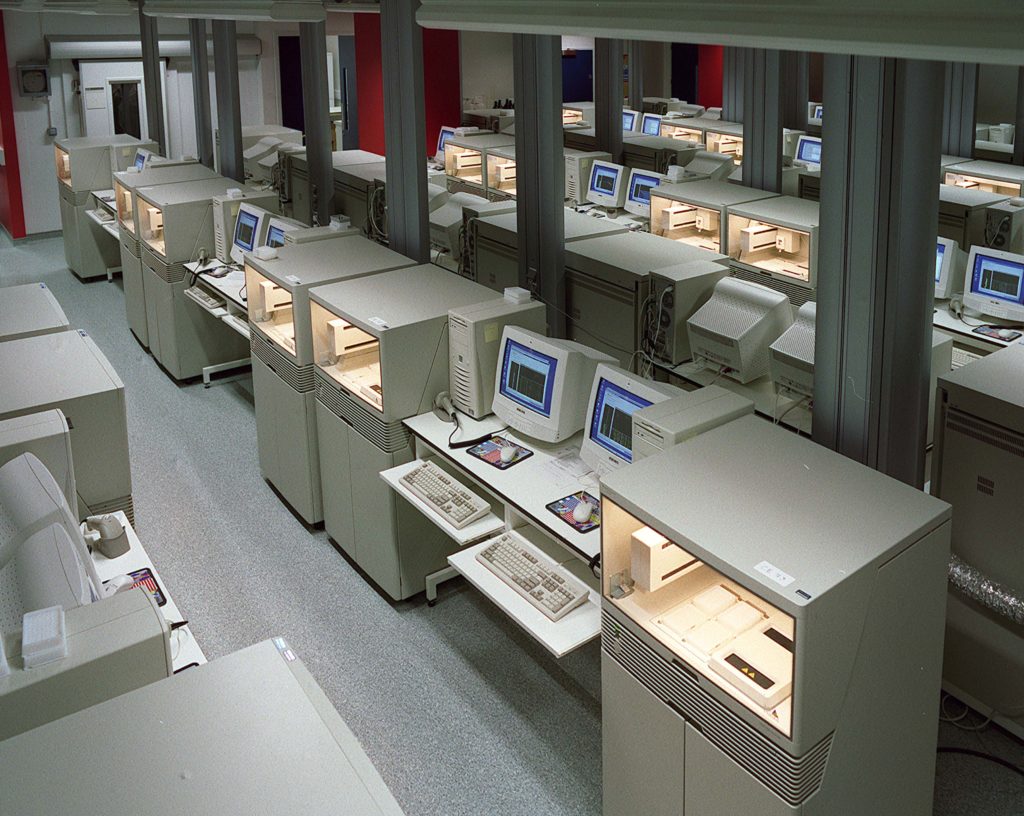A Bold Endeavour
Photograph | Human Genome Project
The Human Genome Project set out to find the order, or sequence, of all 3 billion DNA bases in the human genome for the first time. This would provide a powerful tool, a complete map of all the genes in a human. It was hoped this would improve our understanding of human genetics and pave the way for new, more effective ways of diagnosing, treating and preventing diseases.
The project was initially proposed in the early 1980s and finally commenced in 1990. It was expected to take 15 years but the ‘gold standard’ sequence was delivered in 2003; 2 years ahead of schedule. The project came in under budget as well, at approximately $3 billion. But the biggest surprises were found in the sequence itself.
Surprisingly genes make up only 2% of the genome. In fact the human genome contains just 23,000 protein-coding genes; a similar number to the worm and fly. So what does the rest of the genome do? About half of it contains short sequences of DNA that are repeated many times and have no known function. The rest appears to have a regulatory role, controlling and coordinating when genes are switched on or off.
Another surprise was how much genetic variation there is in humans. Although the DNA sequenced in the Human Genome Project came from several anonymous donors, about 70% of the genome sequence came from a single donor. It became clear during the project that genomes from different people vary in many ways, from single base differences to small sections and large chunks being different. Several projects have compared many human genomes to catalogue all the genetic differences. This has generated an avalanche of genetic information which will help us to better understand the genetic variation between us and its impact on our health.
